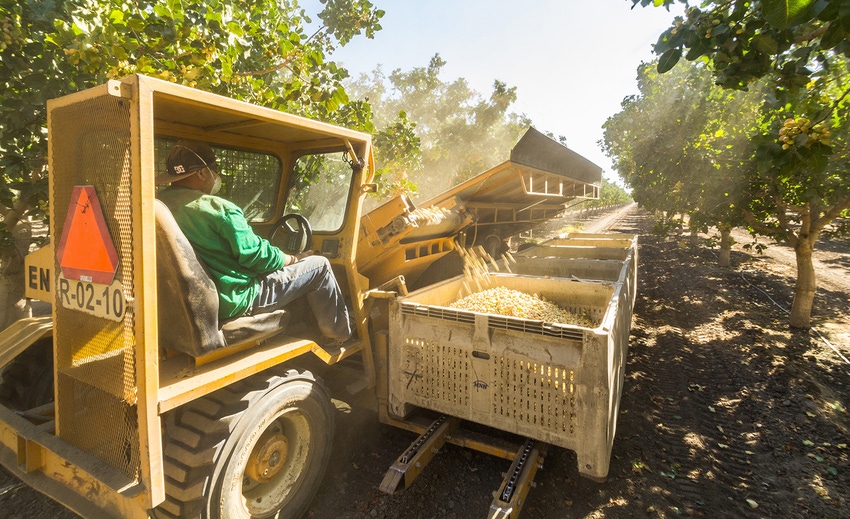
In our current world of uncertain times where constant change is the order of the day, pistachio trees provide stability.
“As far as we know, they last forever,” says Bob Klein, manager of the California Pistachio Research Board in Fresno.
In fact, part of the board’s mission is to make sure that sector of the tree nut industry stays healthy via a $1.8 million research budget for projects involving the control of disease and insect pests, weed control, irrigation, bird repellents, and other topics of similar interest.
“Our industry continues on its path of rapid growth,” according to Dr. Klein. “Although we don’t have really good numbers because of the way rootstocks are sold, that makes tracking almost impossible, we figure our total California acreage is probably in excess of 400,000 acres with bearing acreage just over 300,000 and an estimated 30,000 new acres added annually.
“California’s pistachio crop is expected to increase significantly in the years ahead and research on harvest timing and optimization is needed,” he adds.
Projecting a 1.2-billion-pound crop this year, one of his concerns is: “Can we find a market for it all? The size of the crop is growing dramatically and the real question is will there be a market for all the product that’s produced. We’re capable of growing them and shaking them off the tree, we just need to ensure there will be a place to sell them all.”
Even if Americans consumed pistachios in the volume they do peanuts, the industry would still far exceed any domestic market, he acknowledged.
Markets still growing
“We can still get some growth out of the European market, the Middle East is still growing, we’re always looking at China as well as South America and Africa, but who knows what markets of the future will be at this point?” he said.
To make good things better, researchers supported by his group are looking at things like new varieties, more new acreage planted with Lost Hills or Golden Hills varieties that come into production sooner than the Kerman would, say five years. In general it’s about six years before a first crop, but it’s closer to 10 years before the crop value begins to exceed annual production costs.
“So, our ramp up for the new varieties, like those that bear higher and faster, will be steeper than in the past,” he predicts.
Going back to the research projects involving variety development, genetics, and rootstock production, “We’re looking at programs that are managed with saline irrigation water or in saline-based soils. And we continue to work with major disease concerns.
For four years, a Navel Orangeworm Sterile Insect Technology facility has reared sterile moths for aerial distribution over some 2,000 acres of nut orchards, both pistachio and almond, in Kern County. With the infestation a persistent problem in the San Joaquin Valley, program expansion is anticipated based on Congressional approval of $6 million to fight the pest whose larval stage damages developing nuts and degrades crop quality.
“The SIT moth program (sterile insect technology) is being expanded to involve more growers and we’re looking at what sort of changes need to be made in an operational sense to handle a larger area,” Klein says.
Other research continues involving response to drought-year production and the on- and off-year production cycles. “We’ve already estimated this year’s on-year production at about 1.2 billion pounds and looking ahead to next year when the estimate will be somewhat over 900 million pounds.”
Anyone involved in California agriculture puts water availability right up at the top of their concern list — along with productive crop land.
“Given the state’s water programs, their irrigation land program, and the Sustainable Groundwater Management Act, projections are that a lot of land will ultimately come out of production due to a lack of water.”
For more news on tree nuts as reported by growers and farm advisors, subscribe to the Tree Nut Farm Press e-newsletter.
About the Author(s)
You May Also Like




